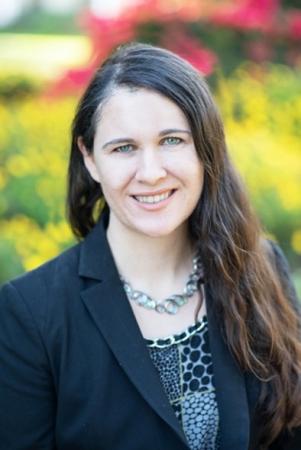
Kathreen Thome
Kathreen Thome
Tuesday, March 12, 2024
12:00pm
NW17-218 Hybrid
Abstract: Negative Triangularity (NT) is a potentially transformative scenario for fusion energy with its high-performance core, L-mode-like edge, and low-field-side divertors that could readily scale to an integrated reactor solution free of ELMs. Benefits of the NT shape were originally demonstrated on the TCV tokamak and high-performance has been previously achieved on DIII-D, which motivated the installation of graphite-tile armor on the low-field-side lower outer wall to attain high-power diverted plasmas with strong negative triangularity. In early 2023, a dedicated multiple-week experimental campaign was conducted to qualify the NT scenario for future reactors on the DIII-D tokamak after previous initial promising experiments on TCV and DIII-D. During this campaign, high confinement (H98y,2≥1), high current (q95<3), and high normalized pressure plasmas (βN>2.5) were achieved at high-injected-power in strongly NT-shaped plasmas with δavg= - 0.5 and a lower outer divertor X-point over a wide range of DIII-D operational space (plasma current, toroidal field, electron density and pressure) in contrast to other high-performance ELM-suppression scenarios that have narrower operating windows. Also demonstrated was high normalized density (ne/nGW≤2), low impurity retention with particle confinement comparable to or less than energy confinement, a detached divertor without impurity seeding, and high core radiation fraction. Plasmas with strong NT maintained a non-ELMing NT-edge with an electron temperature pedestal, exceeding that of typical L-mode plasmas, whereas plasmas with reduced δavg~ - 0.18 transition into H-mode. While these results are promising for a NT fusion pilot plant, outstanding questions remain from the campaign, primarily on scaling confinement to a reactor and on core-edge integration, which could be addressed in future NT work on DIII-D.
Bio: Kathreen Thome is a General Atomics experimental research scientist that works on both the DIII-D and NSTX-U tokamaks. She received a B.S in Nuclear Science and Engineering from MIT in 2009 and her PhD in 2016 in Engineering Physics from the University of Wisconsin–Madison. At DIII-D and NSTX-U, she has participated in diverse research topics, including the development of steady-state plasma scenarios for fusion reactors, transport physics and modeling, and hands-on development of a high-frequency magnetic diagnostic for energetic particles. Dr. Thome is currently the leader of the DIII-D negative triangularity topical area, head of the NSTX-U scenario group, an executive member of the APS Division of Plasma Physics, and regularly participates in outreach and mentoring activities.